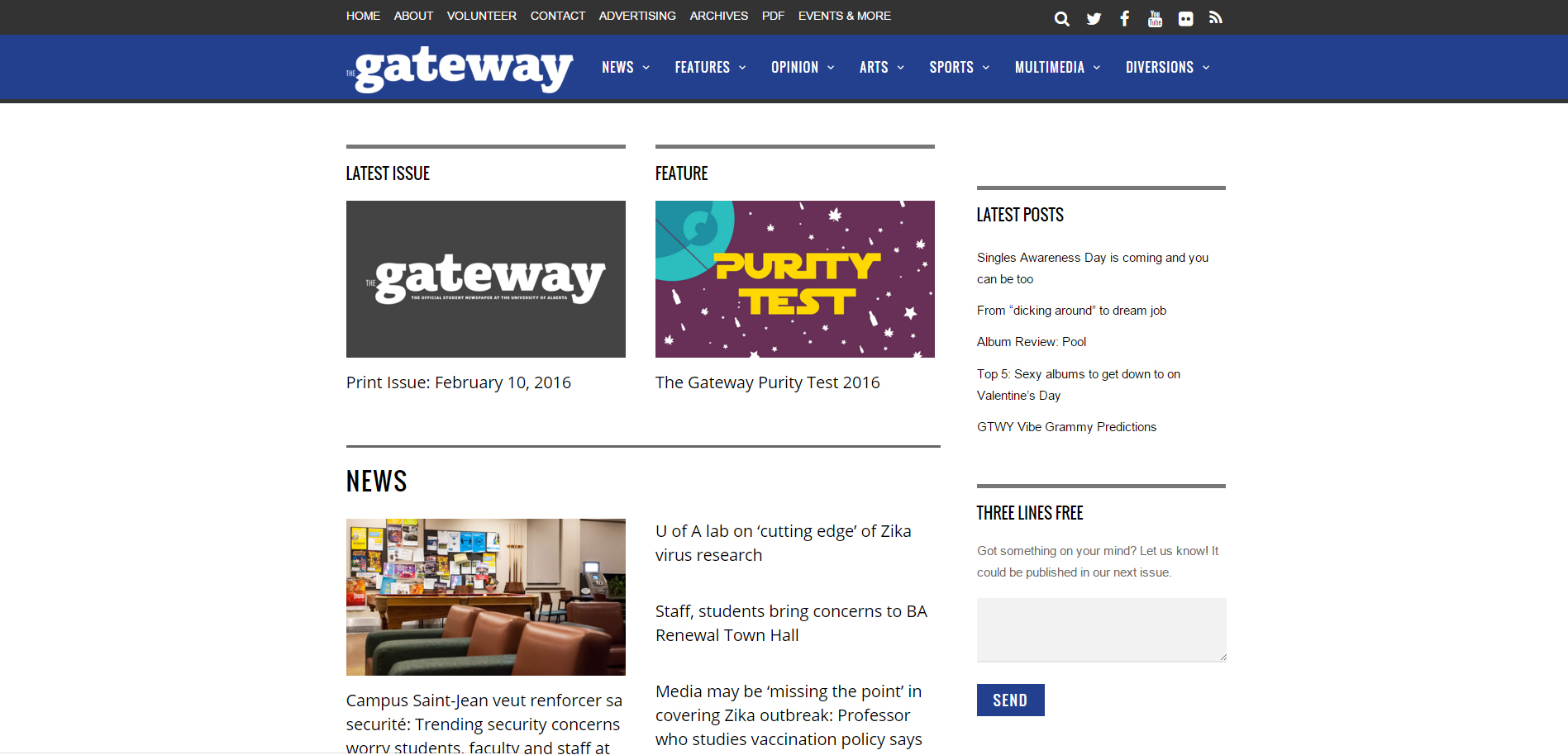The University of Alberta (U of A) student newspaper The Gateway is discontinuing weekly print issues after 106 years of publication.
The Gateway, which was founded in 1910 and is almost as old as U of A itself, will publish articles exclusively on its website along with a monthly features magazine.
The Gateway’s editor-in-chief Cameron Lewis said there were several reasons why he decided to stop printing the paper on a weekly basis, including declining advertising revenue for the print edition of the paper.
Like many of Canada’s daily newspapers, print advertising revenue for The Gateway has declined significantly in the last five years. The newspaper projects a 36 per cent decrease in ad revenue for 2016, Lewis said.
“It’s a poor use of financial resources to keep putting money into printing a newspaper once per week,” he said.
The Gateway would likely have had to cut two or three staff positions, reduce staff salaries by 10 per cent, and drop the “volunteer appreciation” budget if the newspaper continued to print weekly editions, according to Lewis.
He explained that in his four years at The Gateway, the number of readers picking up physical copies of the newspaper decreased from approximately 6,500 to 2,500.
The newspaper currently distributes up to 10,000 copies across a campus of more than 38,000 students.
“Nobody’s picking it up anymore. But our website views have doubled in the past three years,” he said.
In comparison, The Charlatan distributes 5,000 copies per week across campus to more than 28,000 students, and 3,500 copies off campus. On-campus pickup rates for The Charlatan have ranged from 2,777 to 4,874 in the last six issues.
“It’s a completely different animal across the country,” Lewis said. “You have the papers in [British Columbia]—they get so much more money from their student levy, so they can absolutely exist that way if they want to.”
The Gateway receives $3.39 from every undergraduate student annually. In comparison, The Charlatan receives a $5.67 undergraduate student levy per student each year.
Lewis said the decision to move from print to online sets an example for other student papers.
“I think [it’s] something that student newspapers across the country should probably be looking at doing too,” he said. “We can be a positive change for [newspapers] looking to adapt to a new climate.”
Carleton University journalism professor Chris Waddell said news organizations continue to face challenges sustaining print editions, and said he he believes some newspapers will likely shut down or move online.
“I think the problem [The Gateway] has is a problem lots of other people have, which is that they rely on advertising revenue to cover the costs of printing and buying paper,” he said.
“If you get off of print and you’re just doing stuff online, then you save all those costs and it’s possible to do more,” he added.
Waddell said part of the reason print ad revenues drop is because fewer people are picking up the paper and being exposed to ads. The other reason he mentioned is that online advertising is often better for businesses and companies.
The cost of ads can also be cheaper online, making it more affordable for advertisers, he said.
Advertisers can get a better response from audiences online, responses can be tracked better, and audiences can be “geo-targeted” through IP addresses, Waddell added.
Waddell said some newspapers continue to offer print copies because there’s no guarantee that strictly online advertising revenue would make up for a lack of print advertising revenue.
“Many news organizations are not yet at the point where they want to say goodbye to their print readers, because they’re not sure how easily it’s going to be to replace them online,” he said.
The Gateway will continue to print weekly until the end of April. Lewis said the U of A student union will vote on a mandate this week to confirm the change.
“I’m hoping that it passes. I’m sure it will. They all thought it was a great idea,” he said.






